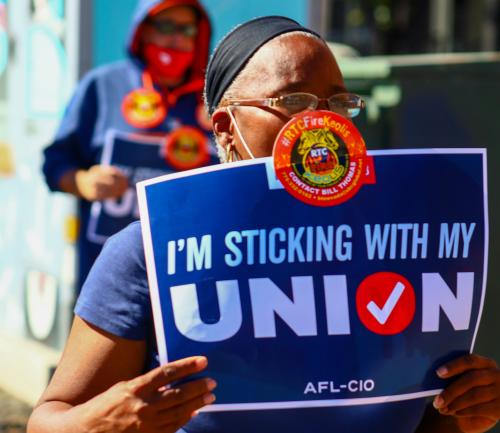The agenda for shareholders continued to evolve during the last proxy season. Environmental, social and political (ESP) proposals proliferated, with shareholders submitting more ESP proposals than any other type. Although only eight of these proposals passed, that was double the number from the previous proxy season, with average shareholder support also climbing.
The passage of such a small number of ESP proposals can be deceiving. It doesn’t mean shareholders don’t care about these issues. On the contrary, roughly two thirds of these proposals didn’t reach a vote because management agreed to engage with shareholders, leading shareholders to withdraw the proposals, according to a detailed 2018 Proxy Season Review that Sullivan & Cromwell published in July.
There is no doubt that more companies have recognized the growing importance of ESP issues to institutional investors – including gender pay equity and the inclusion of women on corporate boards.
In a related development, the New York City Comptroller’s Boardroom Accountability Project last year shifted its focus away from proxy access. In September 2017 the project transitioned to its second phase, advocating for increasing diversity, independence and competence on climate-related issues at the board level. On another front, we’ve seen a dramatic spike in pressure on companies to reduce the typical 25 percent ownership threshold to call a special meeting, although most of that pressure is coming from two individual shareholder activists, John Chevedden and James McRitchie.
Other issues that have yet to rise to the forefront as proxy topics may become more pressing: the growing number of virtual-only shareholder meetings that are held online, cyber-security concerns and compensation issues surrounding the relatively recent requirement that companies disclose CEO pay ratios.
As the shareholder proposal season heats up for 2019, how should corporate boards prepare?
Take the right steps to request no-action relief
First, company boards should be aware that a common strategy used to exclude shareholders proposals – requesting an SEC no-action letter – may not be as effective as it once was. The SEC this year granted just 45 percent of no-action letters requested as of June 30, compared with 66 percent by that date last year.
But requesting no-action relief can work in the right situation. For example, the SEC will often issue a no-action letter if it’s persuaded that a shareholder proposal is not ‘economically relevant’ to the company’s business. Simply asserting that a proposal is not economically relevant may not be enough, however. To improve the likelihood of getting no-action relief, boards should take concrete steps to show they have analyzed proposals under that standard.
For example, Dunkin’ Brands Group received a shareholder proposal on its sale of products with K-Cup Pods packaging, asking the board to issue a report assessing the environmental impact and develop a timeline to phase out the packaging. Before the company asked the SEC for a no-action letter, its nominating and corporate governance committee considered the proposal’s significance to the company, including the licensing fees and royalties that Dunkin’ Brands earns from selling these pods. The committee then reported its analysis to the board, finding that these sales were not economically relevant to the company’s business.
In its request that the SEC take no action, the company described these steps. The SEC granted the relief requested, noting in its letter that it had considered the board’s analysis.
In a potentially new development, if a company faces a shareholder proposal on climate change that it believes is inappropriate for a vote, it may consider asking for a no-action letter citing micro-management. It appears the SEC may be more receptive to these requests. In 2018 the agency informed Deere, PayPal and EOG that they could exclude climate-change proposals under this rationale. Notably, the SEC had refused PayPal’s request on this basis the year before.
In October the SEC’s division of corporation finance issued guidance reaffirming its approach to these types ofno-action requests. The division continues to encourage companies to include their boards’ analyses in no-action requests based on ‘ordinary business’ or ‘economic relevance’. The new guidance explains that the most helpful analyses from the 2018 proxy season focused on the specific substantive factors the board considered to arrive at its conclusion.
Consider a management counterproposal
Another approach to an unwelcome shareholder proposal is putting forward a management counterproposal, rather than letting the shareholder proposal come to a vote without a management alternative.
For example, if a shareholder is seeking to lower the threshold ownership level to call a special meeting, the company could make a counterproposal to ratify the existing threshold. Or it could make a counterproposal to adopt a reduced threshold that is higher than the shareholder’s proposed percentage.
Several companies have successfully used counterproposals in this type of situation. In the last 12 months, the SEC has granted no-action letters eight times on this basis, including to AES and Capital One. Both were allowed to exclude proposals from John Chevedden seeking a reduction of the ownership threshold from 25 percent to 10 percent. Companies that take this approach should expect to disclose the nature of the excluded shareholder proposal, as the SEC required of AES and Capital One.
This approach carries some risk. ISS and the Council of Institutional Investors (CII) have attacked the use of these counterproposals, with CII dismissing it as ‘game playing’. When AES did this, ISS issued a negative recommendation against the chair of its governance committee. That director got only 67 percent shareholder support, while other nominees received at least 96 percent. Both ISS and Glass Lewis recently announced that for 2019 they will typically recommend against the ratification proposal as well as members of the nominating and governance committee in these cases.
Comptroller’s new agenda: consider revising board matrices
One of the most prolific shareholder activists is New York City Comptroller Scott Stringer, who acts on behalf of New York City pension funds holding $195 billion in investments. When Stringer launched his Boardroom Accountability Project in November 2014, he focused on giving shareowners the ability to nominate and vote for directors to run against a company’s slate. From 2015 to 2017 the comptroller was the primary sponsor of these proxy access proposals, but that activity has tapered off. In the 2018 proxy season it appears he’s sent those proposals to only 17 companies, compared with 70 last year.
In September 2017 the Boardroom Accountability Project transitioned to its second phase. In announcing this move, Stringer vowed to ‘ratchet up the pressure’ on corporate boards to increase diversity, independence and competence on climate-related issues at the board level. He sent letters to 151 portfolio companies asking them to publish a matrix including standardized annual disclosures on their board diversity in terms of skills, race, gender and other factors.
In August 2018 the comptroller’s office published a compendium of best practices in board matrices taken from this year’s proxy statements. Wells Fargo, PepsiCo, Chevron and 15 other companies were singled out for their best practices. Boards should carefully review their disclosures on director diversity and consider adding more information about skills, race and gender, perhaps following some of the best practices identified in this report.
According to ISS data, the comptroller has sent only one formal proposal to disclose a board diversity and qualifications matrix so far. The proposal, which went to a vote of ExxonMobil’s shareholders on May 30, 2018, failed to pass, gaining only 17 percent of the votes cast. Despite this result, it wouldn’t be surprising if the comptroller made more proposals on this issue in the coming proxy season to companies that don’t meet its best practices.
Discuss committing to diverse candidate pools
Stringer isn’t the only powerful voice concerned about board diversity. State Street Global Advisors, BlackRock, Vanguard Group and Glass Lewis have all recently called for the inclusion of more women on corporate boards. BlackRock stated in its 2018 proxy voting guidelines that it normally expects to see at least two women directors on every board. Glass Lewis has announced that, beginning in 2019, it will recommend against the nominating chair of Russell 3000 companies with all-male boards. ISS’s similar policy begins in 2020.
The high rate of withdrawal of shareholder diversity proposals indicates that companies are making board gender diversity a priority, eliminating the perceived need by shareholders to push for a vote. Last year, for example, Amazon switched course on its objection to a shareholder proposal for a policy requiring a diverse slate, opting instead to adopt the policy.
In light of these developments, boards may want to consider committing to diverse candidate pools and should be prepared to engage with investors on diversity issues.
Pay attention to new disclosures on CEO pay ratios
This year, for the first time, US companies were required to disclose in their proxy statements the ratio of their CEO’s pay to the pay of the median company employee. To date, institutional investors have generally expressed ambivalence about these disclosures. For example, both BlackRock and T Rowe Price have indicated that they will not use these ratios to inform their voting or engagement.
But companies in the upcoming proxy season will for the first time have to disclose year-on-year changes in their ratio and these figures may attract more investor attention. Companies should draft these sections carefully and be prepared to field questions. Most large institutional investors have the sophistication to understand high pay ratios, but these disclosures could still create the risk of bad publicity in the general press.
Although predicting the future is risky, there is little question that shareholders will continue to submit proposals on ESP issues and to lower special meeting ownership percentages. A board that is aware of these issues, is willing to engage when appropriate and understands its options will be best prepared for the next proxy season.
Marc Treviño and Melissa Sawyer are partners with Sullivan & Cromwell








